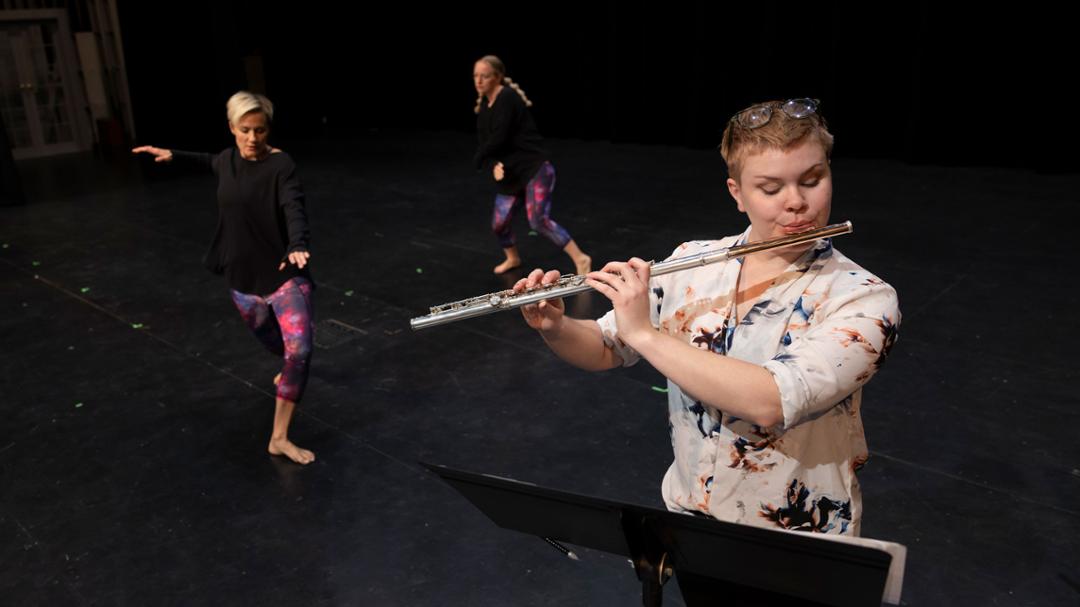An interdisciplinary collaboration brought concepts like gravitational waves and the Higgs Boson to life in a performance at the Talkington School for Young Women Leaders.
The sound of flutes fluttering through virtuosic runs are accented by the turn of dancers’ feet hitting the stage. There is an occasional murmur in the rapt audience.
Then there is silence.
A pause between notes and a stillness from movement.
In an instant, the motion and sound return with a resounding percussive energy. The flutes crescendo, the dancers leap.
Faculty from Texas Tech University are illustrating what the first detection of gravitational waves (2015) and the discovery of the Higgs Boson (2012) felt like.
Gravitational waves were predicted by Albert Einstein over 100 years ago. They carry information about colliding black holes and other exotic objects through the “stretching and squeezing” of space that gravitational waves produce. Several Texas Tech faculty, including Professors Alessandra Corsi, Benjamin Owen and Joseph Romano were part of the initial detections.
The Higgs particle was predicted by François Englert and Peter W. Higgs. The discovery of this subatomic particle was aided by researchers at Texas Tech, notably Professor Nural Akchurin and Professor and Chair of Physics and Astronomy Sung-Won Lee.
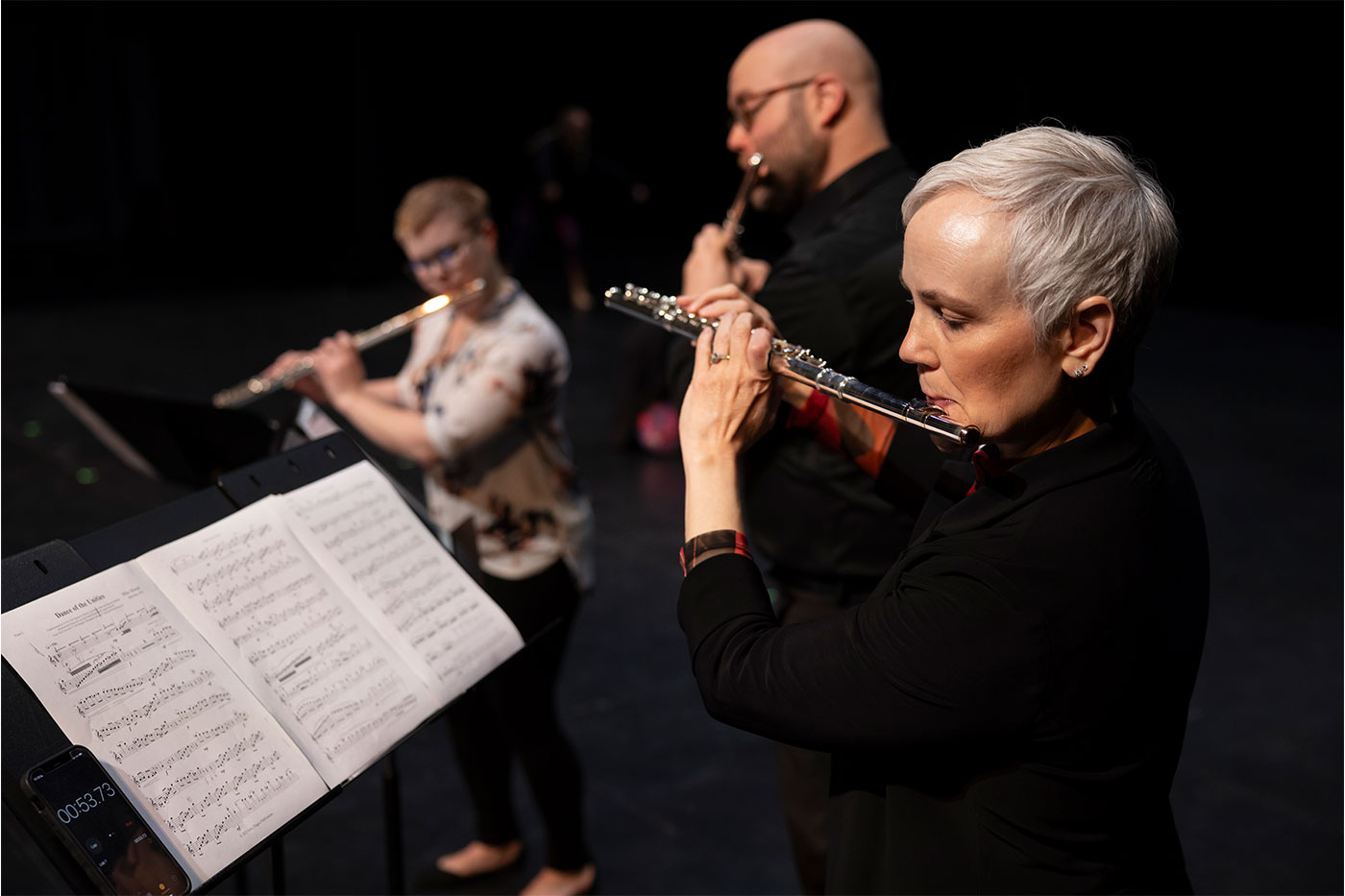
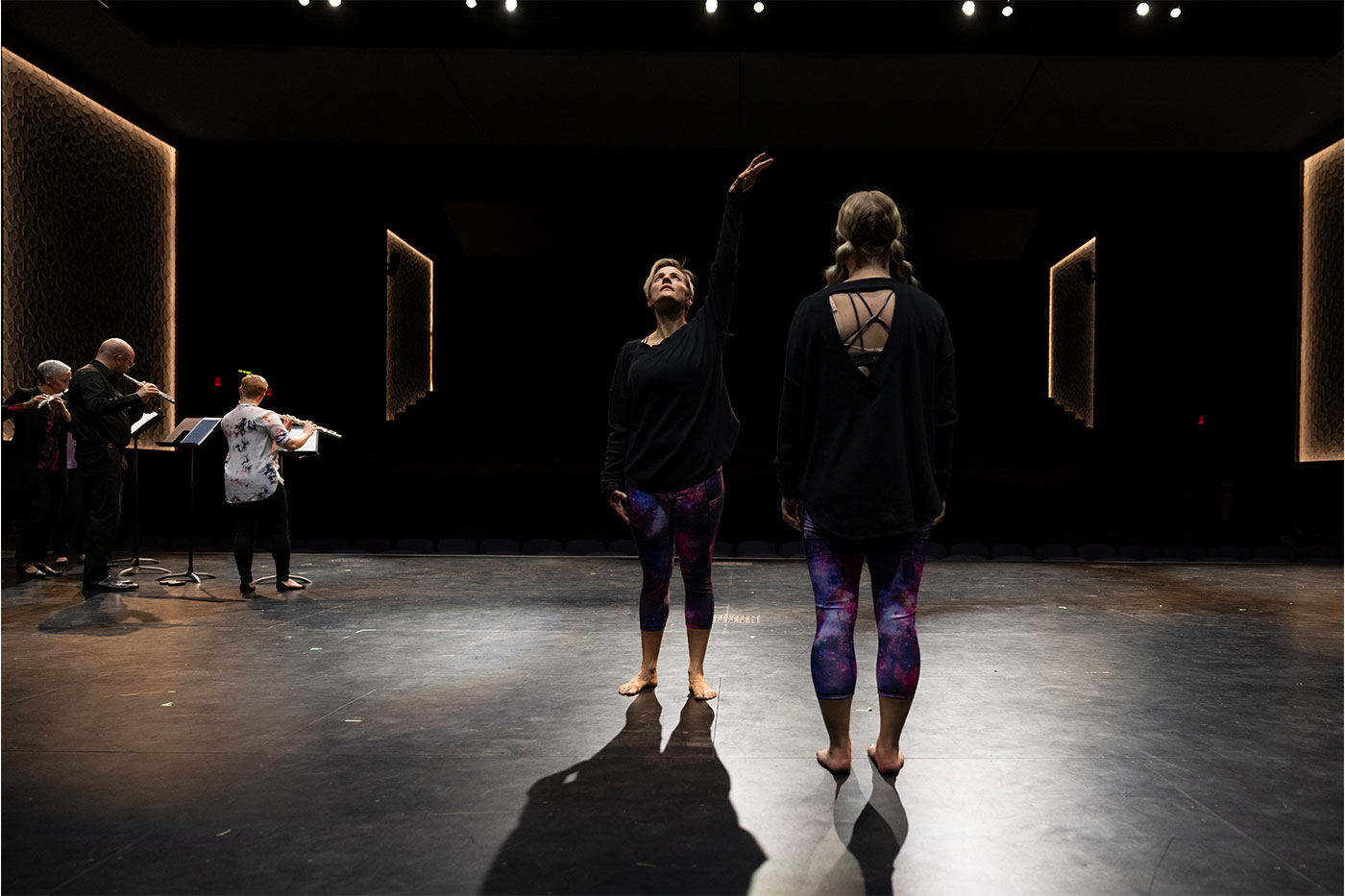
But not all discoveries are best understood through data alone. The interdisciplinary team that put last week’s performance together translated data into a musical score and choreography to bring complex concepts to life.
A Divide of Disciplines
Many of us will never be experts in advanced physics.
That’s perfectly all right.
However, future physicists are likely now in grade school. They’re at an appropriate age to foster interest in science, technology, engineering, arts and mathematics (STEAM). Because of this, Texas Tech faculty decided to perform at the Talkington School for Young Women Leaders, a specialty school that is part of the Lubbock Independent School District (Lubbock ISD). The young women’s preparatory school serves 6th-12th grade and specializes in cultivating girls’ interest in science and the arts.
The decision to perform for students was driven by the outreach portion of the grant that brought all this together.
Texas Tech’s School of Music, School of Theatre & Dance, and Department of Physics and Astronomy combined forces in 2023 when they applied for a Scholarship Catalyst Grant from the Office of Research & Innovation. They titled their application “When Sound & Science Collide: Musical Composition and Performance as Educational Illustrations of Complex Scientific Models.”
The project started with the idea to commission a work for flute quartet. Thus “Waves and Particles” was written by Mike Mower, a flautist and composer who studied at the Royal Academy of Music in London. (Excerpt below.)
“We’re aiming to utilize sound, particularly music composition and performance, to communicate complex scientific concepts to audiences of all ages,” said Lisa Garner Santa, professor of flute and principal investigator.
Physics and music are more connected than we might realize. So connected that the university offers a course called “Physics of Sound and Music.” From sound waves to auditorium acoustics, the concepts are key for both scientists and musicians to master.
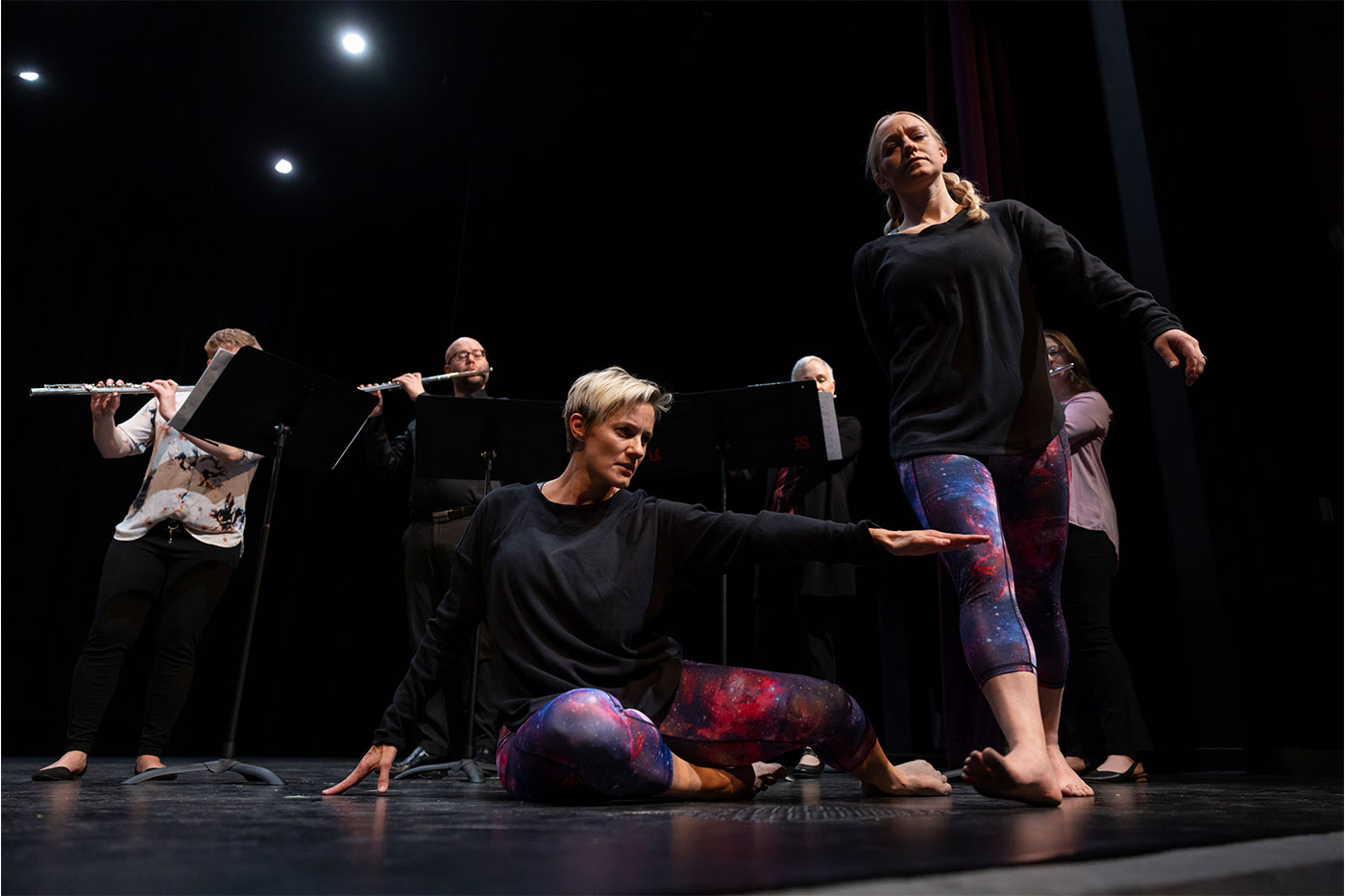
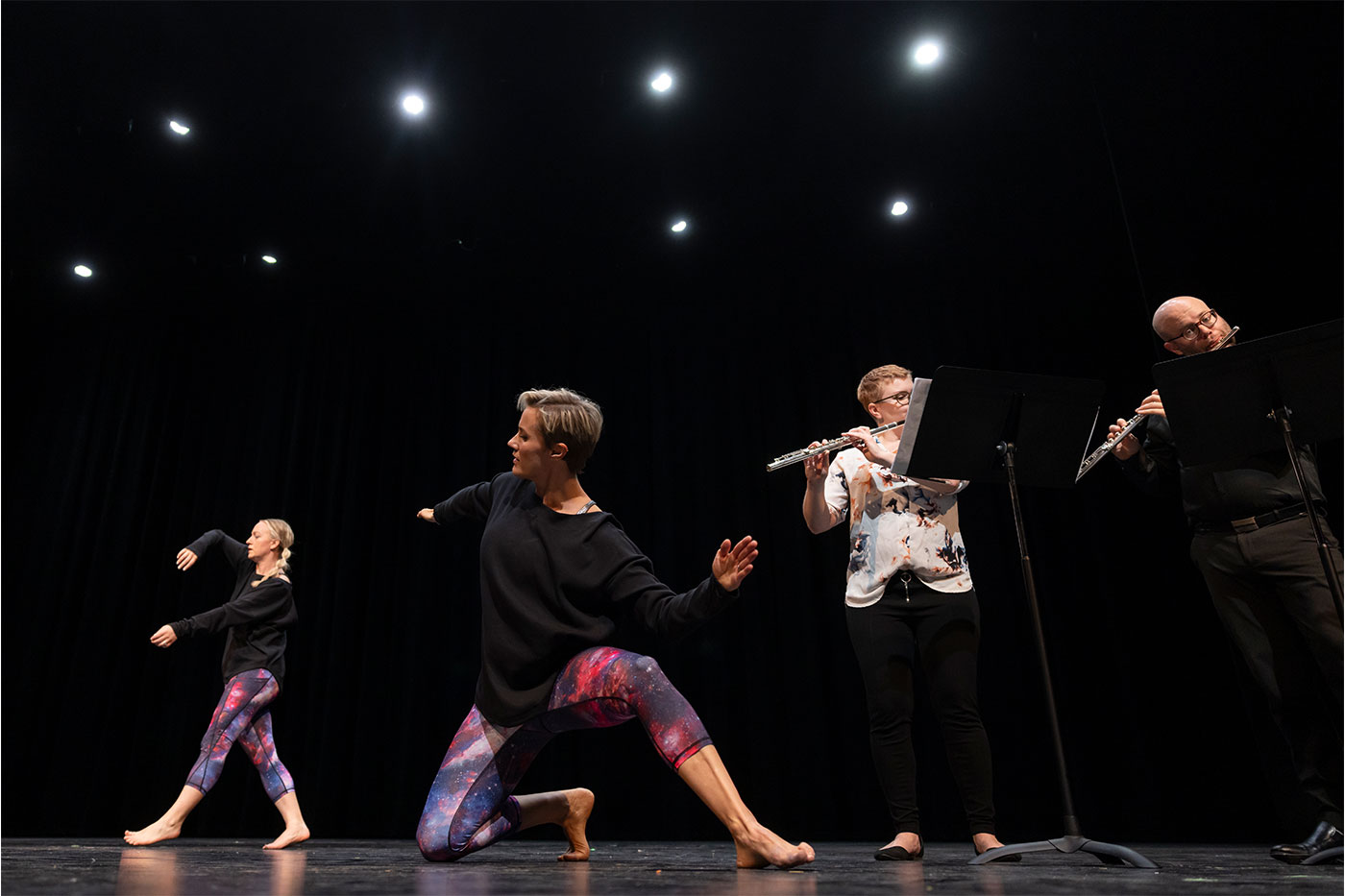
While the two groups are now part of their own distinct disciplines, this was not so hundreds of years ago.
In his New York Times article from 1999, Richard Panek wrote, “The disciplines we now recognize as art and science were virtually indistinguishable. To the eye of a beholder in the street of 15th-century Florence, it would have been difficult to look at a perspective painting and tell the difference between the geometry and the draftsmanship if only because there was none.”
In many ways, the separation of each discipline has allowed further growth within its specialty. But when it comes to new information, collaboration can help condense complicated information into coherent ideas.
“It is always challenging to explain complex scientific concepts to somebody outside your field, since you don’t speak the same language as they do,” Romano said. “So, you must use analogies and simplified models to express the main ideas.”
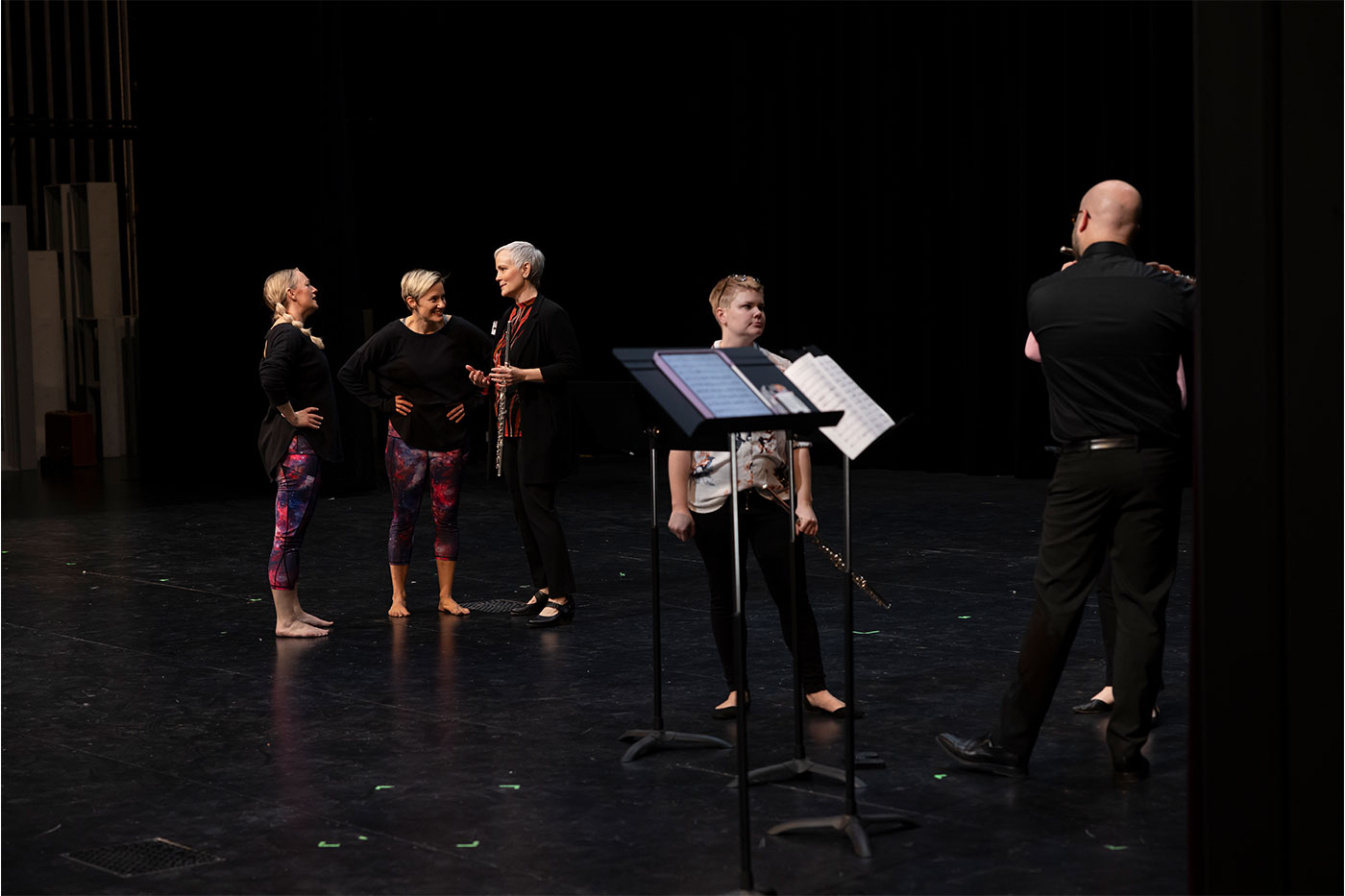
Black Holes & Gravitational Waves
Romano begins by presenting the idea of gravitational waves to the students. He prefaces what they are about to hear and see.
“As two black holes orbit around one another and eventually come together, in those last few seconds, they produce a signal that, when converted to sound, sounds like a chirp,” Romano explained.
The flute quartet demonstrates a “chirping” sound.
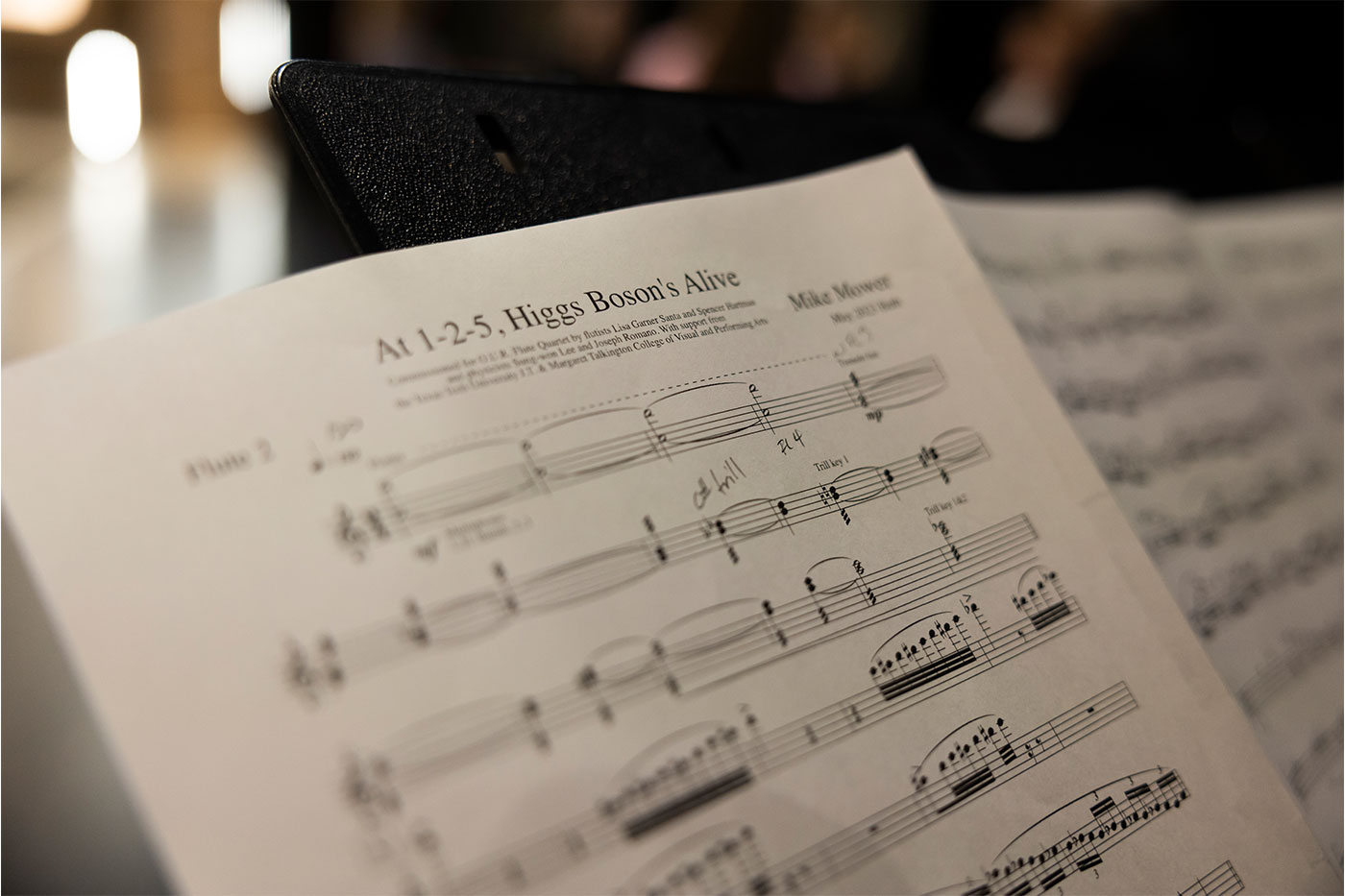
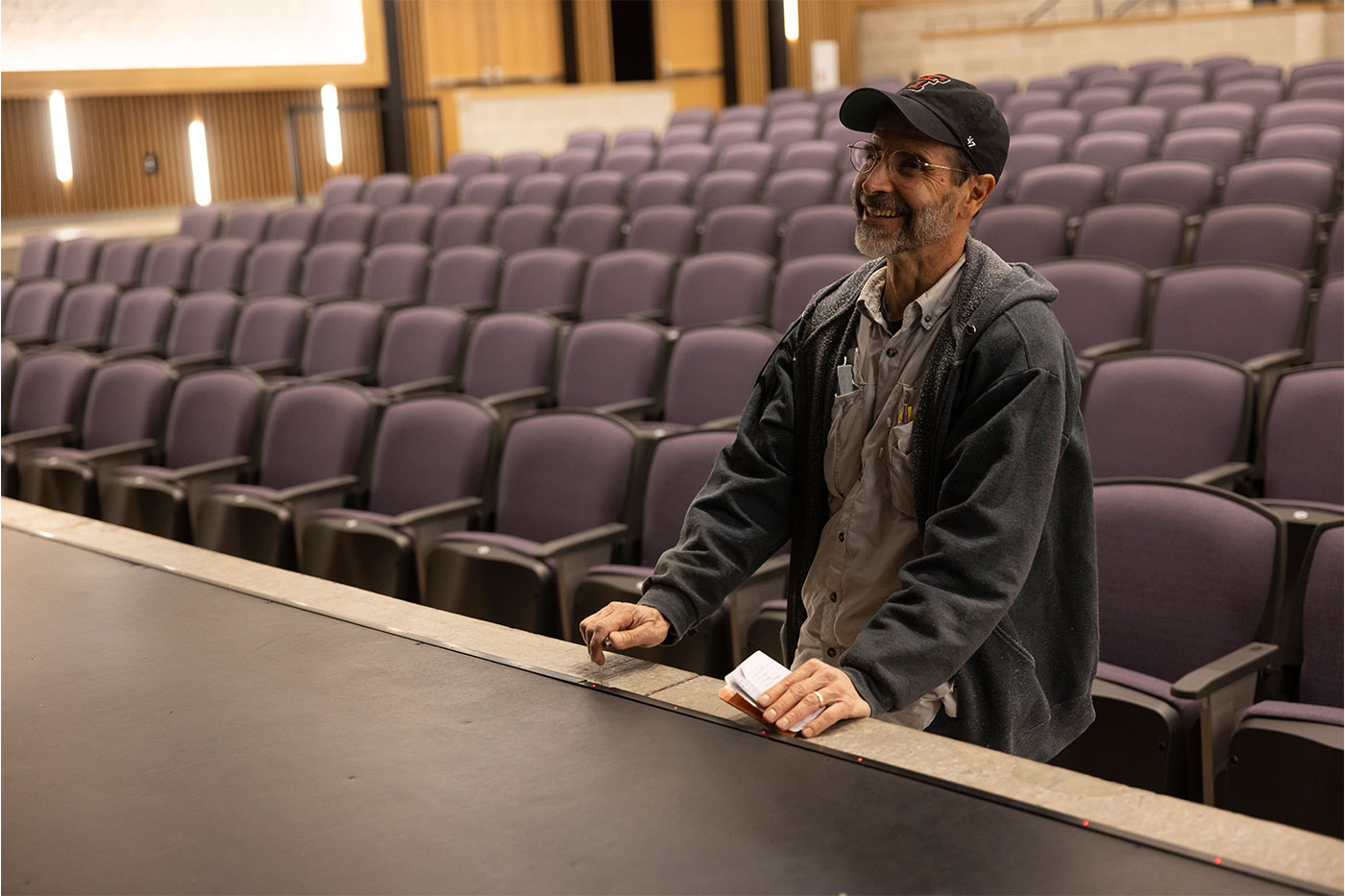
The students’ excitement grows.
The dancers begin to move around each other in circles, as if an invisible force is pulling them toward one another.
One dancer draws on another’s back, mimicking the notes and calculations of scientists working to reveal some of the universe’s best-kept secrets. Their movements turn from slow and predictable to wildly out-of-control movements. At one point, a dancer is upside down, the audience feeling the departure from reality as we know it.
In this moment, science and art are working together perfectly.
According to Professor of Theatre & Dance Ali Duffy, dance and the body are as complex as any scientific concept.
“The key in choreographing a concept like this is to find qualities, patterns, shapes and movement to portray using dancers’ bodies,” Duffy said. “In this project, we generated movement based on the patterns of black holes.”
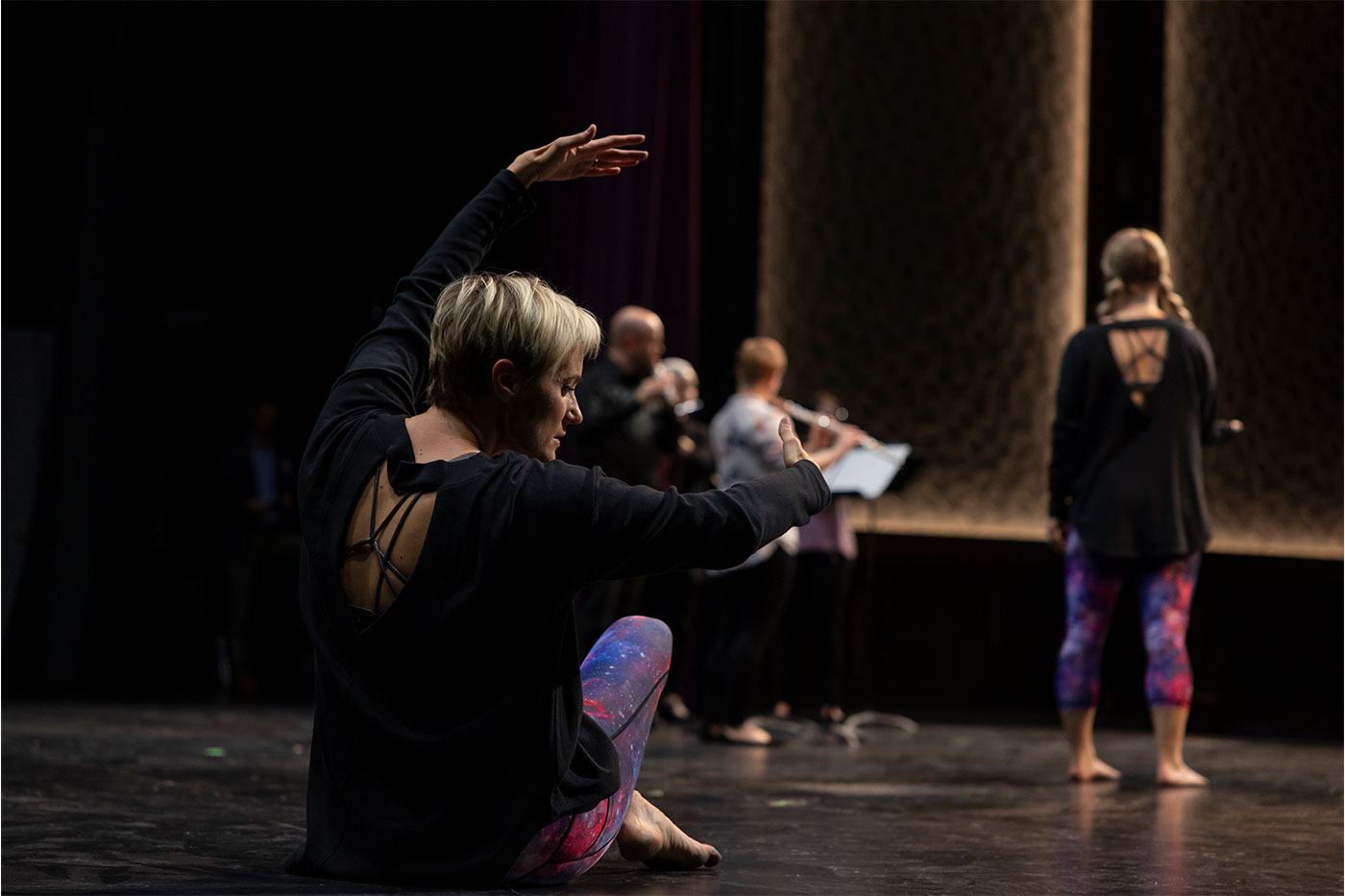
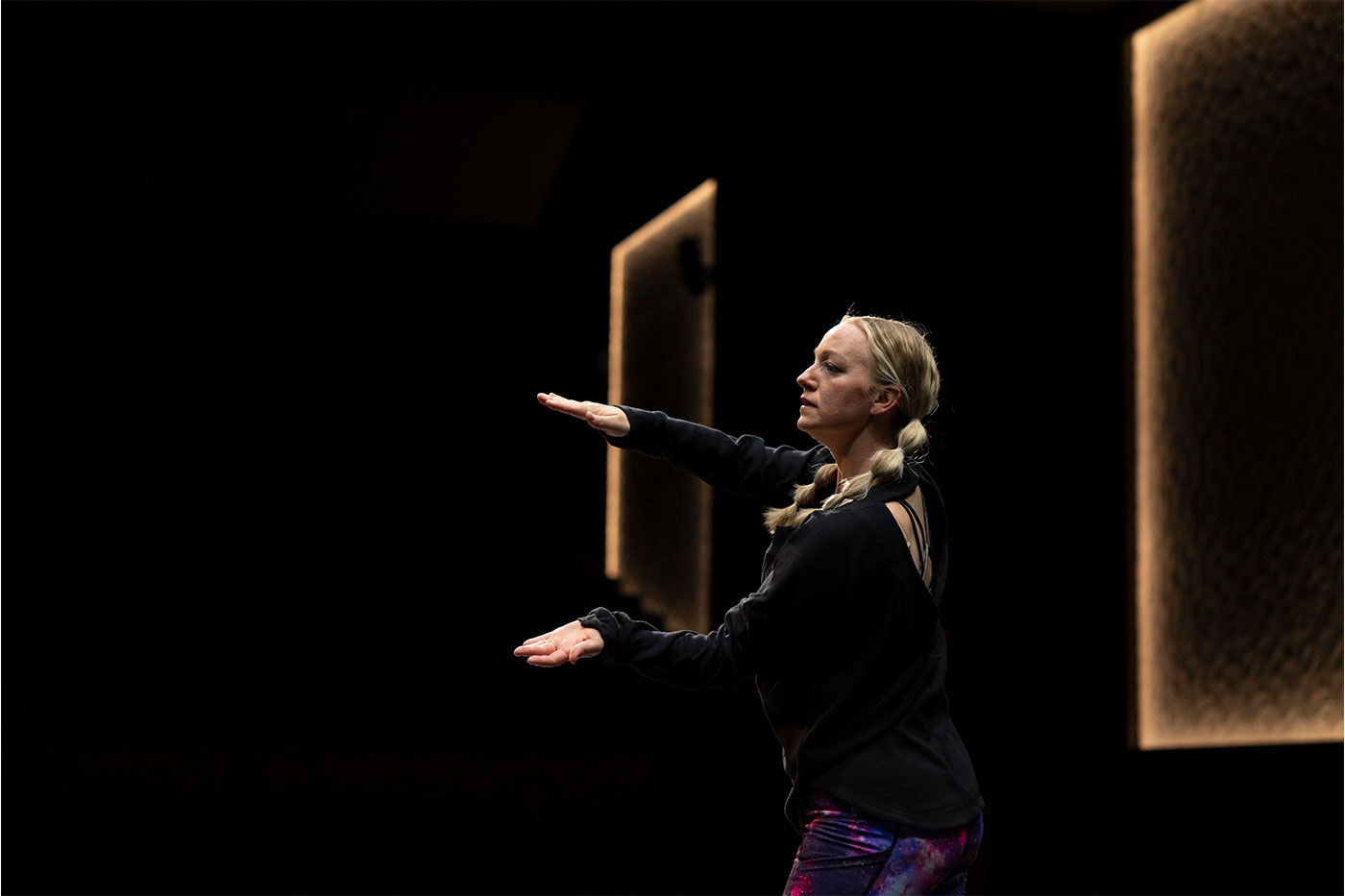
The faculty in the Department of Physics and Astronomy were captivated by how artists brought data to life.
“While science is constrained by nature, a scientist must be creative to tease out nature’s secrets,” Romano said. “Art is constrained by the imagination of the artist, but it is often inspired by nature. So, the two go hand in hand.”
Higgs Boson
In the decade since the Higgs Boson was discovered, physicists have faced the challenge of communicating why the particle matters.
Professor Lee steps up to the podium, and shares what the discovery of the Higgs Boson means for science at large.
“As scientists we are always wondering what the universe is made of and where we come from,” Lee said to students.
He then shows a picture of the Large Hadron Collider. The students shout in surprise. The LHC accelerator was used to discover the Higgs Boson and continues to be utilized to recreate the conditions just after the Big Bang by smashing particles together at high energies.
Lee shares pictures of the machines used at the European Organization for Nuclear Research (CERN), which he has visited many times. Whether it is through photographs, music or dance, Lee is a believer in any medium that helps students access science more easily.
Lee will continue to find ways to portray scientific concepts through installing artwork such as photography and sculptures in Texas Tech’s new academic sciences building when it opens.
The Next Generation
About 500 students watched the performance with wide eyes.
“There are so many amazing academic initiatives taking place at Texas Tech,” said Executive Director of Fine Arts for Lubbock ISD Andrew Babcock. “Sometimes it is hard for our community to understand the impact the university has on our state, nation and beyond. The impact is much bigger than the city limits of Lubbock. Having the opportunity for the young ladies at Talkington to experience such a unique and inspiring presentation tangibly deepens the educational relationship between Texas Tech and Lubbock ISD.”
Many Lubbock students study only five miles from the university, but accomplishments such as the discovery of the Higgs Boson can feel light years away. Bringing faculty into the community allows students to know their aspirations, however large, are possible.
Female researchers are largely underrepresented in scientific fields such as physics. It is vital that young girls are offered inclusivity and support at an early age. This increases the chances of them pursuing a career in a STEM field.
“This will open up pathways and opportunities for greater innovation and scientific success,” Lee said.
In the long run, this is what will catalyze future discovery.
In the study, “The Equality Equation: Advancing the Participation of Women and Girls in STEM,” researchers found girls do as well or better than boys on science and math tests.
These findings were consistent throughout primary and secondary school. However, at the tertiary level, there is a sudden gap. Girls might outperform boys on tests, but few of them declare STEM majors once getting to college.
Babcock hopes this might change.
“The impact of this performance is one that resets the bar of possibilities for our students,” Babcock said. “The music, dance and science combine in such a way that inspires everyone to want to know more about each medium, both independently and collectively. We will see some amazing fruit from the seeds planted today.”

